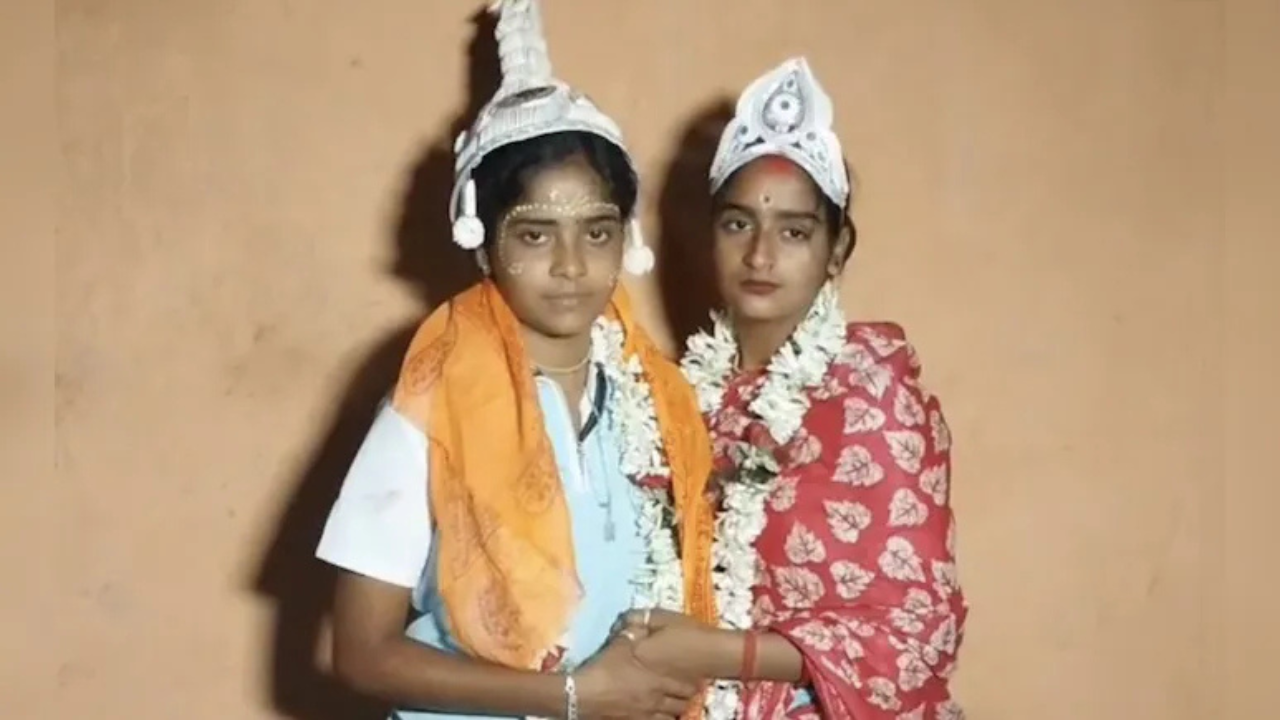 English
English

In a bold celebration of love and identity, two professional dancers in the Sundarbans exchanged vows despite societal taboos and legal uncertainty about same-sex marriages in India, can a love story challenge deep-rooted norms and spark change?

Riya’s family rejected their relationship while Rakhi’s family supported them.
Sundarbans: In a quiet village tucked away in the Sundarbans, Riya and Rakhi, both professional dancers, celebrated their union in a ceremony that few expected and many will remember. Their connection began two years ago via phone calls and friendship blossomed into love. Riya, orphaned at a young age, was raised by her uncle and aunt; Rakhi grew up in her family home. When Riya revealed their relationship to her family, they refused to accept it. With no support, Riya moved in with Rakhi whose family embraced them. Their marriage, arranged after neighbours’ discussions, took place at a local temple, with exchanging of garlands and the start of a shared life together.
Legally, India does not yet recognise same-sex marriages. The Supreme Court has held that the institution of marriage under existing law applies only to a man and a woman and asked Parliament to act. Multiple legal commentaries confirm this exclusion and note that same-sex couples are denied registration of their marriage, the full range of spousal rights, inheritance and other legal protections. For Riya and Rakhi, their ceremony is symbolic rather than a legally registered marriage under Indian statute.
Acceptance is uneven. Surveys show a large majority in India remain opposed to legal recognition of same-sex marriage. At the same time courts and activists note a gradual shift: the Madras High Court affirmed that while marriage may not yet be available to same-sex couples, they nonetheless have the right to form a family and be protected from discrimination. In the remote Sundarbans community, the presence of neighbours who discussed and facilitated the ceremony suggests local support is growing, though broader societal change remains a slower journey.
The couple’s decision to make their commitment public and solemnise it in a temple setting carries deep meaning. It sends a message to the younger generation that love cannot be confined by gender or tradition. Rakhi’s family support was crucial; Riya’s family’s rejection reveals the real-life cost many couples face. Rakhi said: “We began dating but many said how can two girls be in a relationship? We decided we would stay together for life.” For Riya the choice was clear: “I won’t lose the person I love… Who decided only a woman can love a man or a man can love a woman?”
While their union lacks formal recognition under Indian law, the story of Riya and Rakhi holds social significance. It challenges norms, invites public discussion and tests the gap between evolving social attitudes and static legal frameworks. For change to be durable, focus must shift from isolated acts of courage to institutional reform and societal inclusion. The couple’s move may inspire others in hidden communities to step forward. But as the legal system stands today, thousands of same-sex couples continue to exist without the protections enjoyed by heterosexual married couples. The road ahead remains complex and contested.
Their story is more than a personal triumph. It is a signal flare for social transformation: love may have prevailed in one small part of the Sundarbans, but will Indian society and law move to meet it halfway
No related posts found.